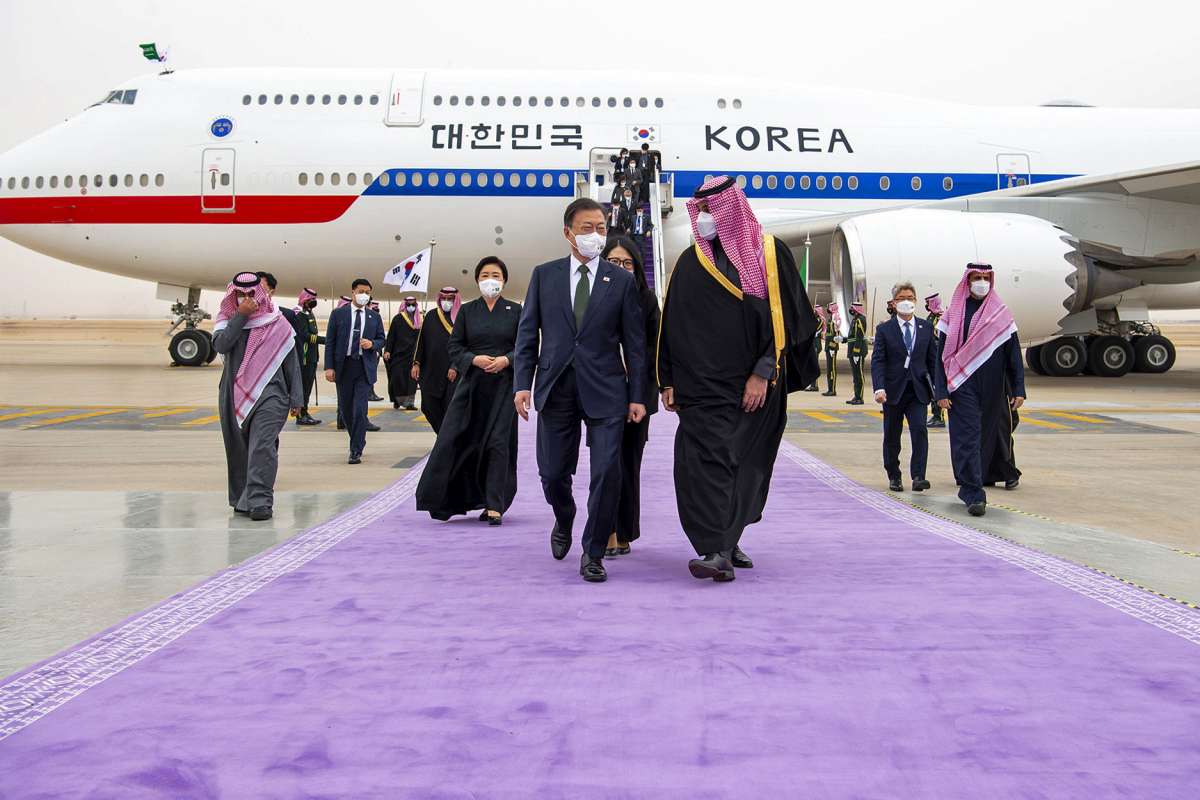Last week’s visit of South Korean President Moon Jae-in to Saudi Arabia underscored the closeness of the economic relationship that the two countries have succeeded in forging in the last few years.
The visit was part of a broader strategy to strengthen bilateral collaboration in health care, science, technology, hydrogen, public health, and artificial intelligence.
The flow of foreign direct investment is at the center of the Saudi Korean 2030 vision. In October 2021, commerce between the Kingdom and South Korea reached S3.09 billion.
South Korea is one of the Kingdom’s most important trading partners. It ranks among the top ten import and export destinations, with 120 joint Saudi Korean projects worth nearly one billion dollars, 20% of which are industrial projects and other commercial and investment projects in the Kingdom.
The Federation of Saudi Chambers of Commerce stated that the South Korean President’s visit to the country would increase bilateral cooperation and open new economic and investment horizons between the two countries, mainly since Korea is currently working on several major projects in Saudi Arabia, including the Riyadh metro and the Shuaiba water desalination and power generation plant, in addition to the development of a shipyard in Ras Al-Khair.
The two countries signed 15 agreements totaling $8.2 billion in 2019. The agreements include a wide range of topics, including communication and information technologies, e-government, automobiles, hydrogen economy, medical insurance, culture, financial institution supervision, industries, research, and military technologies, in addition to the National Intellectual Property Strategy Program and the collaboration between the Korea Development Institute and the National Center for Strategic Studies.
In the third quarter of 2021, the volume of trade exchange between the two countries was over $7.3 billion, up 66% from the same quarter the previous year.
According to a study conducted by the Center for Economic Studies of the Federation of Saudi Chambers of Commerce, Korea ranked fourth in terms of countries to which the Kingdom exports and tenth in terms of imports in the third quarter of 2021, with total non-oil exports to Korea totaling $320 million.
Non-oil exports topped the “products of chemical and related industries” in the ranking with $208 million, followed by “normal metals and their products” with $59 million.
Collaboration in the hydrogen sector
The Saudi Public Investment Fund (PIF) signed a memorandum of understanding with the companies “Posco” and “Samsung CT” on the sidelines of the “Saudi-Korean Investment Forum” in Riyadh, aimed at developing a project to produce green hydrogen for export purposes.
This collaboration is under Saudi Arabia’s strategy to play a leading role in the economy based on carbon recycling and support international efforts to reduce carbon emissions and build a more sustainable future.
The memorandum of understanding called for feasibility studies to construct a green hydrogen manufacturing facility in Saudi Arabia for export.
Yazid Al-Humaid, the Fund’s Deputy Governor and Head of the Middle East and North Africa Investments Department, said the agreement comes as the Fund seeks to expand its investments in the field of green hydrogen and to implement many projects that achieve sustainability.
This deal is part of the PIF’s efforts to create innovative and promising industries in Saudi Arabia, particularly the energy sector, in line with the Fund’s 2021-2025 plan. It also coincides with the Fund’s achievement in establishing new, sustainable sectors in the country, such as renewable energy and waste management.
Aramco signs ten partnerships with firms in South Korea
Saudi Aramco signed ten agreements with South Korea during the event, including one with the Korean Export-Import Bank to consider strategic financing solutions to support the company’s activities and investments in Korean firms.
KEPCO, S-Oil, POSCO, Hyundai Oil Bank, H2 Korea, and Lotte Chemical have also signed memorandums of understanding the Saudi company to explore prospects for cooperation in supply, transportation, exploitation, and licensing ammonia and hydrogen
According to Saudi Arabia, the initial plans involve a molding and forming facility with a capacity of 60,000 tons per year in the Kingdom.








